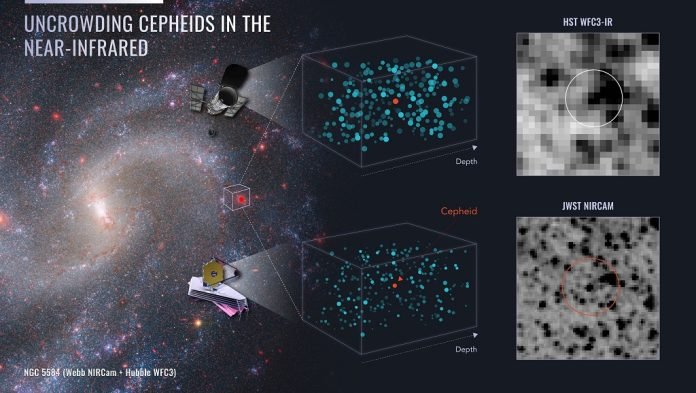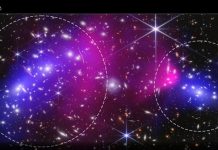
Have you ever tried to read a sign that was too far away to see clearly?
Imagine doing that, but the sign is in a galaxy millions of light-years away!
Scientists have been doing just that, trying to figure out how fast the universe is growing.
This speed is called the “Hubble constant,” and it helps us understand the universe’s past and what might happen in the future.
To measure this cosmic speed, scientists use really special stars called Cepheid variables. These stars are super bright and their brightness changes over time.
It’s like they’re blinking, and this blinking tells us how far away they are.
The farther away they are, the longer it takes for their light to reach us. This helps scientists work out how quickly the universe is growing.
The Hubble Space Telescope has been a big help in studying these stars. Because it’s above Earth’s atmosphere, it gives really clear pictures.
However, it’s not perfect. When it looks at stars in the red part of the light spectrum, the images get a bit blurry.
This is a problem because red light is better at getting through cosmic dust, making the stars seem closer than they actually are.
Enter the James Webb Space Telescope! It has even better vision for red light. Scientists led by Nobel winner Adam Riess used Webb to look at Cepheid stars in two kinds of galaxies.
First, they looked at a galaxy whose distance we know really well to understand how bright these stars actually are.
Then, they looked at galaxies where a certain kind of explosion called a supernova has happened. Supernovas can also tell us about distance.
After comparing the new data with old Hubble data, they found that the Webb’s numbers were even more precise.
The good news is that the Hubble was pretty accurate to begin with. The bad news? The mystery of the universe’s “speed limit” just got deeper.
Here’s why: the speed the Webb and Hubble telescopes show us doesn’t match what we expect based on the universe’s “baby picture,” known as the cosmic microwave background.
This mismatch is called the “Hubble Tension,” and it’s been puzzling scientists for a decade.
So why the mismatch? One possibility is that there’s something strange going on, like a new kind of dark energy or matter we don’t know about yet.
Another idea is that our understanding of gravity might need an update. Or it could be a special particle or field we haven’t discovered. Of course, it could also be that measurements have some errors, but scientists think that’s less likely now.
With the Webb Telescope’s new data, the exciting but puzzling questions about the universe’s growth rate are still wide open. We’re one step closer to figuring it out, but the universe remains a fascinating mystery.
Follow us on Twitter for more articles about this topic.
Source: NASA.



